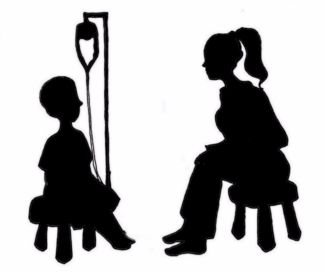 At surface level you picture psychologists working in cosy, cubic offices, with reclining plush couches to lay on and confess. People forget that psychologists are found in a myriad of social settings such as HR departments or as counselors within high schools.
At surface level you picture psychologists working in cosy, cubic offices, with reclining plush couches to lay on and confess. People forget that psychologists are found in a myriad of social settings such as HR departments or as counselors within high schools.
Or in the walk in clinic of a cancer hospital.
It is with irony that I relay how privileged I was to gain an elective placement at the Shaukat Khanum Cancer Hospital and Research Centre, a charity based institution that provides free treatment to some of the most underprivileged. It is the only one of its kind in Pakistan, undertaking quality cancer research and providing some of the best care. For many, it is the only option.
My placement entailed shadowing the health psychologist loyally, five days a week, for two months. This worked out brilliantly, to see psychological practice instilled diversely as opposed to being pigeonholed. When diagnosing and providing treatment for cancer many psychological aspects are at play. Cancer patients in Pakistan are at a high risk of developing depression and anxiety. They also experience a variety of issues such as anger management, disturbed sleeping and eating patterns, and even sexual problems. Within a cancer hospital, psychology has a wide net to cast.

Many patients and carers from illiterate backgrounds also need to be educated on cancer. Informing a man that providing his brother palliative care doesn’t mean we’re curing him, we’re just making death as painless as possible. Seeing the realisation dawn in the eyes of a mother with cancer when she’s told she can touch her children because it’s not contagious. Trying to explain to a wife that her husband was cured but it’s back again.
This falls on the shoulders of the health psychologist, who is spread thin across multiple jurisdictions. She’s responsible for counselling patients, conducting mental assessments and moderating group therapies. As per my shadowing, I went on rounds to check on high risk patients expressing suicidal tendencies or demonstrating aggression. Sat in on counselling sessions when cordoned to the outpatient department, filling out charts. Assisted in follow-ups of cured patients that still required support. Sometimes you’d find me on assignment in their medical library, conducting research.
And twice a week I was confined to the walk in clinic.
Hospitals are associated with mortality but within a cancer hospital you are distinctly aware of the fact that nearly everybody around you is dying. The scent of death hovers in the air. You can shake it off momentarily but when all your patients are cancer patients death is a persistent companion and you’ll often look it in the eye. This was apparent in the walk in clinic.

As Shaukat Khanum runs primarily on the generosity of donations it cannot afford to treat everyone. Admission is based on how curable you are, in terms of age, form of cancer and early stages. Depending on the odds you may be turned away and more often than not, those who are do not fully understand why. Despite this, everyone is entitled to receive counselling at the walk in clinic and this was where we would clarify misfortune. I sat across from countless individuals, informing them that they were dying and nothing could be done because they didn’t meet protocol. You learn to harden your heart to cope.
Once, a file turned up. A little girl, six or seven, stage one, leukemia- by all accounts a perfect candidate. It was a relief to be able to give good news for once and when that little girl was ushered in by her mother I wondered why the psychologist looked so defeated. Then everything stopped making sense.
We would not be admitting her. Despite meeting the criteria to a tee she wouldn’t receive treatment. Why? Because at that time Shaukat Khanum did not have a doctor employed to lead the treatment of blood cancer in children – their only man had recently retired and a suitable replacement was nowhere to be found. The mother was inconsolable and the little girl pulled at her sleeve weakly, asking “Amma. Why are you crying?”.
It’s a powerless feeling, a bodily heaviness, sending a child away to die, knowing the cause is not something incurable, but limitations of money, geography and specialist availability. Nothing you say or do makes it better and it never gets easier. You transition repeatedly between painful emotions and being hollow, questioning the point of anything. You want to cry your heart out but you stay stonewalled as you tell a child she’s dying. Because this is your job. You pull the plug of your humanity and remain calm as the next patient comes. And the next. And the next. Because it’s hardly ever good news in the walk in clinic.
So you teach yourself to get used to it.

Very honest write up buddy ! With lots of information. I can feel the pain of patients –
we’re just making death as painless as possible.
LikeLiked by 1 person
Thanks x I’m glad you found it informative.
LikeLiked by 1 person
You are always welcome.
LikeLiked by 1 person
This perfectly explains why psychiatrists commit suicide at rates about twice those expected [of physicians] and one out of every four psychologists has suicidal feelings at times according to one survey. This isn’t an easy job and not everyone can handle it.
LikeLiked by 1 person
Very true. It can be very difficult, when working in health care, to leave these problems at work when you come home. An unfortunate side effect of the job.
LikeLike